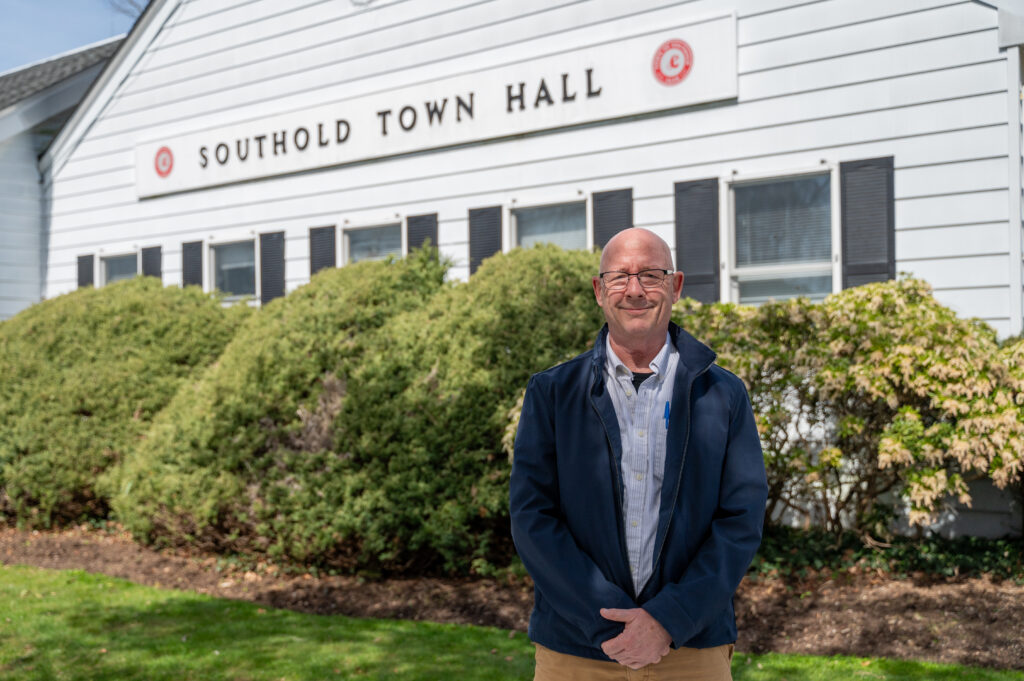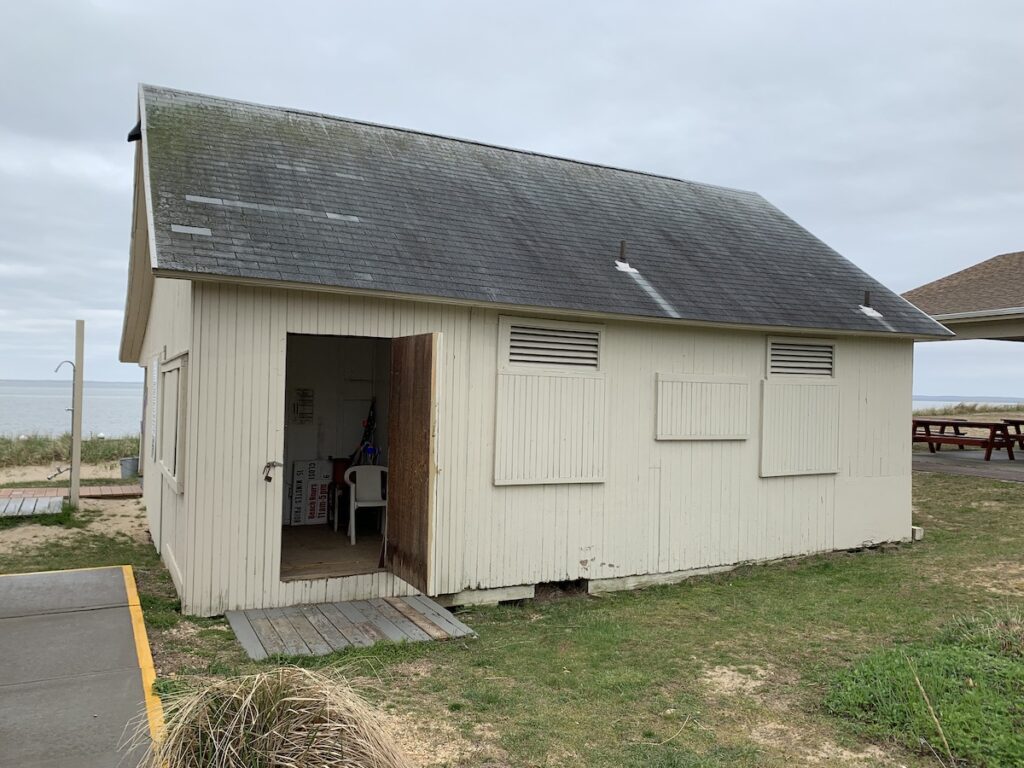‘Future of Greenport’ forum highlights key challenges confronting village

From housing prices to climate change, land use to taxes and traffic, the Village of Greenport is a small seaside bellwether for many of the thorniest challenges facing business, civic and community leaders across the East End.
Panelists at the Times Review Talks breakfast forum at the American Legion Hall in Greenport Thursday uniformly agreed that the toughest task facing the village and the region is the skyrocketing costs of housing.
“Even physicians who make a lot of money, can’t afford to live here,” said panelist Paul Connor, CEO of Stony Brook Eastern Long Island Hospital, the event’s lead sponsor. “Eastern [Suffolk] Cardiology — they have 10 cardiologists. Cardiologists make a lot of money, and they can’t afford to live here. You’re paying cardiologists $350,000. Think about that. It’s stunning.”
Mr. Connor said that less than half of his employees live on the North Fork and only about 70% live within an hour drive of the hospital. “The rest of them are dispersed all over the place,” he said.
“But they have to pass literally every other hospital to get out here.”
As the easternmost business district on the North Fork, Greenport is uniquely challenged when it comes to attracting and housing a workforce that could create the robust, year-round economy the village envisions.
Panelist Bob Syron, president of Peconic Landing, an event sponsor, said “the majority of our leadership team is traveling 45 minutes or better a day to come” to work, noting that the problem isn’t new to the East End.
“When I came here 20 years ago, I said, ‘this is a great opportunity. I’d like it, but I can’t afford it.’ That was me, coming in as the executive of the organization.”
Mr. Syron said that Peconic Landing allowed him to live on the property for his first four years as CEO “so I could save money to buy a home.”
It’s why Mr. Syron was among several panelists who contended that the village would be best served focusing on the concept of workforce housing instead of affordable housing — a term increasingly hard to define though generally tied to government funding and restricted to applicants who fall below a certain income level.
“Peconic [Landing] is exploring building workforce housing,” he said. “You cannot say ‘affordable’ because then [there is] a means test. I would say as a large, not-for-profit organization, if we don’t build it and call it affordable housing, we can’t take any federal or state money, so it would have to be completely subsidized by us.”
Fellow panelist and Greenport Village Mayor Kevin Stuessi said that about 60% of workers in the village come from Calverton or further west. “We have people that have grown up here that can no longer afford to be here.”
Lori Panarello, panelist and owner of Craft Hair in Greenport, agreed. “In a growing business, we have to go out, I have to personally go outside the North Fork to attract help … I’m faced with the additional cost of paying for someone to drive an hour, an hour and a half to come to my salon from up island.”
Reverend Natalie Wimberly, pastor of the Clinton Memorial AME Zion Church in Greenport, said that these days, the majority of her congregation commutes to her services from Ridge or further west, including some from Brooklyn.
“Thank God they love me that much that they want to come and hear me,” she said with a smile. “But they’re commuting to come — and this is the place of their birth. This is the place their families were established. This is the place they’re longing to come back to. But … no jobs. It’s not affordable for them to live here without having to work all year round, two or three jobs.”
She said several long-established local families from her congregation have moved south — most to North Carolina or Maryland — for a better cost of living than they could find on the North Fork.
Rev. Wimberly also made a point to note that among the roughly 70 guests in attendance, key voices in the village remained under represented at the Thursday morning forum.
At 8:30 a.m., she said, “the average laborer in our community is at work.”
Panelist Sonia Spar, the Southold Town liaison to Spanish speaking residents, said the working class community is an essential component of the broader North Fork economy.
“Look around you. How many Latinos do you see here?” she asked the audience.
She said many in the working-class Latino community feel overlooked by their North Fork neighbors — and yet they represent “a remarkable percentage of people who are making the industries work.
“Without them, nothing would be working: the farms, the businesses, the restaurants, hospitality.
“Do you see them?”





Nicholas Grasso photos
Mr. Stuessi said village officials are exploring a variety of options to manage the affordability crisis, including the potential to “partner with a private developer and a hospital or a senior living center to build something privately for the benefit of the community.”
The mayor, who said in an interview after the forum that roughly two-thirds of the residences in the village are occupied year round, told his fellow panelists that code changes could go a long way to increasing available housing stock.
“We have people that are retired and living in a large, old, Victorian house, and it’s too much for them to take care of. They might want to turn their single family home into a two family house and rent half of it out. Currently in the village, there are a lot of neighborhoods that are single family zoned. We’re looking to change that and eliminate single family zoning.”
The village board is currently considering how and whether to rewrite the code to allow for the addition of accessory dwelling units.
“Many of us have a great little garage or barn behind our structure,” he said. “That’s a place you could move a child, an uncle or a grandmother or somebody else that will rent it to help subsidize your costs and create a home for somebody.”
Mr. Stuessi was one of a number of panelists to express alarm at the burgeoning climate crisis.
“We’re dealing with some really serious issues,” he said. “We have areas of the village which are flooding on a regular basis … we have several blocks that literally have standing water in the basements and backyards, [that] froze over a month ago.”
The mayor said the village recently received $3 million to shore up the bulkheads along the waterfront. He said a 2017 study said the bulkhead was in critical danger of collapse and required replacement, and that work is expected to begin this fall.
Steve Wick, senior editor at the Times Review Media Group and one of the event moderators, turned to Mr. Connor and said that “your hospital sits right on the water.”
“It’s actually in the water,” a wry Mr. Connor replied. “Six acres sitting in the middle of Sterling Creek and Strong Harbor. While it’s a beautiful location and our patients love it — it’s very therapeutic — it is a hostile environment for infrastructure.
“We now have the water that comes up through the floor. Hydrostatic pressure used to happen maybe three, four times a year [and] we have a whole process to take care of it.”
Yet “it happened [last] weekend,” he said. “There was no wind. The moon wasn’t full and the tide was up, and the water came in.”
He said the hospital has withstood hurricanes and floods and Superstorm Sandy, but that “this is the first time the hydrostatic pressure came in.”
Like many local residents, Mr. Connor said he’s noticed in recent years that “the high tides are consistently high.
“It’s not just one month out of the year. Now this is a year-round feature.”
Audience member Christopher Nuzzi, executive vice president of Advantage Title Group Agency in Riverhead, said after the forum that he had gotten a lot out of the discussion, and echoed a comment made earlier by Mr. Syron.
“One of the issues with affordable housing, with creating the actual units, is that once you get beyond the zoning is that oftentimes it involves state and federal incentives,” he said. “And what happens is, you eliminate your ability to deal with your own local community, the people, your neighbors.
“My suggestion would be to consider not taking any state or federal incentives to develop some of these projects.”








